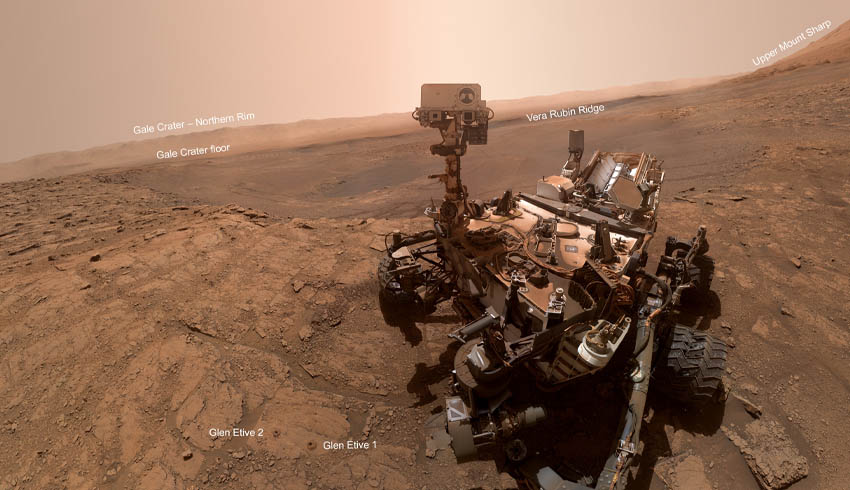Two important missions are heading for Mars next year – NASA’s Mars 2020 and the European Space Agency (ESA) Exomars – with both departing in July.
The launch window for Mars 2020 opens on 17 July 2020. It will land at Jezero Crater on Mars on 18 February 2021.
The launch window for ExoMars opens on 25 July 2020. It will land at Oxia Planum in March 2021.
Both will search for signs of past microbial life by examining different kinds of rock – which is where Australia comes into the picture.
Ken Farley, Mars 2020 project scientist at Caltech in Pasadena, California, said they expected to find many significant rocks during the Mars 2020 and ExoMars missions.
“We also have to leave open the possibility we could find one or more very special rocks, the kind whose discovery would not only speak volumes about the history of Mars but contribute significantly to the discussion of life elsewhere in the universe," he said.
Guided by Martin Van Kranendonk, director of the Australian Centre for Astrobiology at the University of NSW, members of the two missions science teams ventured to the Pilbara region of Western Australia to analyse, discuss and debate stromatolites.
These are structures preserved in rock that formed in water on early Earth and containing a fossilised record of ancient microbial life.
One site of interest was a stromatolite cluster in a grouping of rock called the Dresser Formation, containing some of the oldest known fossilised records of life.
Van Kranendonk said around 3.48 billion years ago this location was home to structures called microbial mats – visible to the naked eye but composed of microscopic organisms.
Today we would think of it as simple pond scum but back then, this was the most complex life on Earth.
Over time, sheet after sheet of these microbes trapped sediment on top of previous layers. When the seawater receded and the pond scum dried up and disappeared millennia later, leaving striking evidence of the co-evolution of geology and biology.
"A stromatolite is quite subtle to the untrained eye," Van Kranendonk said.
"But once you know the details, you recognise that these wavy, wrinkly rocks have a structure different from that which can be explained by just geology."
Scientists believe the same occurred on Mars at roughly the same time.
Between 3 and 4 billion years ago at the Mars 2020 landing site in Jezero Crater, a river flowed into a body of water in conditions ideal for formation of stromatolites.
While the two missions both seek to find evidence of past life, each is approaching the challenge in its own way.
Touching down about a week after Mars 2020, the ExoMars rover, otherwise known as the Rosalind Franklin, carries a core drill that on two or more occasions will bore almost two metres into the Martian crust.
It will analyse samples onsite with a sophisticated suite of scientific instruments.
The coring mechanism on the NASA Mars 2020 rover drills shallower holes but is designed to collect more than 40 rock and soil core samples.
There will be on-site analysis of rocks at the coring sites, and the samples themselves will be sealed in metal tubes that will ultimately be deposited by the rover at specific sites, maybe for retrieval and return to Earth some time in the future.

